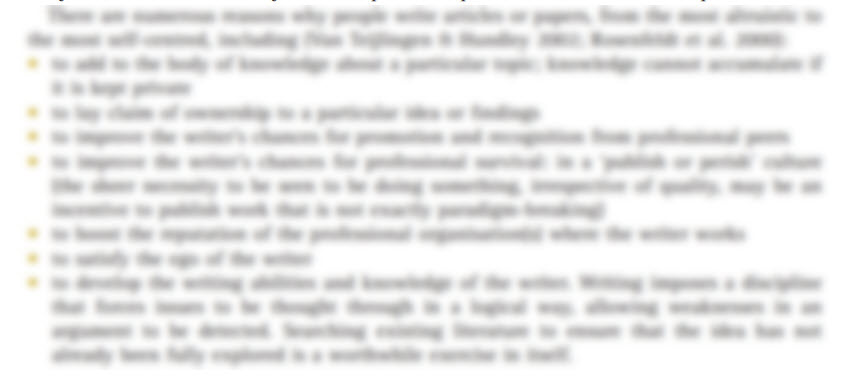Applying for grants is a time-consuming process. Deadlines can loom suddenly, leading to stress and long days. Success rates can be low, meaning that considerable effort is often not rewarded.
At the outset, you need to form a realistic timeline to work on the grant application. In addition to identifying your funding source, researching the specific requirements of the grant application and formulating your project budget, you will need to start planning your written proposal. Careful planning and early feedback from your colleagues will maximise your chances of a successful outcome. Following these 6 steps will help you develop the core content of your application.
Step 1: Identify your audience
Will the grant be reviewed by specialists in your field or by a panel of non-specialists or lay people? In reality, you may have two types of audience:
- Non-specialist or non-scientific reviewers who will require background information to judge whether your project is worthwhile.
- Specialist reviewers within your discipline that will be more familiar with your research.
Depending upon the funding organisation, some of your reviewers may not be familiar with the terminology or the current research problems of your discipline or immediately appreciate understand why your project is so important. Therefore, it is imperative to make sure your proposal outlines the relevancy of your topic to current issues and is clear and concise.
Step 2: Summarise the key research problems overarching your project
Before you can think about convincing people how good your project is, you need to build a picture about the current problems facing your research community.
Successful grant applications clearly define the area of need and how it is relevant to your potential funding source. This will help you build your case as to why your project is so important. In addition to outlining the scientific importance of your project, describe how your work might affect society and the environment. For example, if you are researching a disease, highlight the burden associated with that disease. Outline how many people it affects and the costs to society.
Step 3: Summarise the key problem your project will solve
This is where you focus on the key problem your project will attempt to solve. Clearly articulate what specific problem needs to be investigated and why. Avoid promising to solve too many problems or problems that are too large in scope, otherwise your project will seem unrealistic and unachievable. Describe how the key problem is connected to the broader scope of the research problems outlined in Step 2. Once you have outlined your research problem, then you can clearly state what you aim to achieve (step 4).
Avoid writing vague or generalised statements, for example: “To date, little research has been conducted in this area.” To help you keep your application short, also avoid obvious statements, for example: “This topic was investigated through an extensive search of the literature.”
Step 4: Articulate your aim, hypotheses and outcomes
While directly referring to your key research problem, outline what you aim to achieve, including your hypotheses and what outcomes you can expect from your completed project.
Once the overall aim is stated, the project should be broken down into sub-aims, each with a defined outcome. This approach helps you to define realistic timelines, ensures that the project description is concise and will improve the likelihood that the grant will be successful.
Step 5: Summarise how you will do the work (methods)
A major factor in grant success is being able to convince the reviewers that the project is feasible and that the work is likely to be completed. Clearly outline what methods you will use and what experience you have in this area. If you need to develop new methods, clearly explain what is required and provide evidence of your ability to develop other methods in the past. Outline the scope of the project. How long it will take to complete each component? Is the size of your project feasible within the set time frame? Do you have access to suitable equipment and operational facilities? Promote yourself. Provide evidence (such as previous publications or unpublished data) to demonstrate that you are capable of successfully completing the project.
6. Seek feedback from colleagues
Give your draft proposal to your colleagues for feedback. They may provide valuable feedback on what is feasible, which aspects are the most interesting and what might be missing.
This early feedback will help you focus on what you want to achieve, why it is important and how likely the project is to succeed. It can be helpful to talk to people who have already received funding from a particular source; what feedback did they receive and what aspects did they think helped them to secure funding? If appropriate, it might also be helpful to seek feedback from colleagues who have recently been unsuccessful in winning a grant from the same funding body.
What to do next?
- After receiving feedback from your colleagues, rework the application so that it is clear, compelling, concise and flows well.
- Finalise your budget and ensure all aspects of your project are justified.
- Seek at least two more rounds of feedback from your peers as you proceed through the writing and submission process. Grants that are peer-reviewed prior to submission are more likely to be successful.
- Pay close attention to the small details in the submission process. You don’t want to have your grant rejected on a technicality or an unchecked box on a submission form.
© Liza O’Donnell & Marina Hurley 2020 www.writingclearscience.com.au
Any suggestions or comments please email info@writingclearscience.com.au
FURTHER READING
- Should we use active or passive voice?
- 10 writing tips for the struggling ESL science writer
- Co-authors should define their roles and responsibilities before they start writing
- How to write when you don’t feel like it
- When to cite and when not to
- Back to basics: science knowledge is gained while information is produced
- How to build and maintain confidence as a writer
- If science was perfect, it wouldn’t be science
- The essentials of science writing: What is science writing?
- 8 steps to writing your first draft
- Two ways to be an inefficient writer
- Work-procrastination: important stuff that keeps us from writing
Find out more about our new online course...
Now includes feedback on your writing Learn more...
SUBSCRIBE to the Writing Clear Science Newsletter
to keep informed about our latest blogs, webinars and writing courses.







